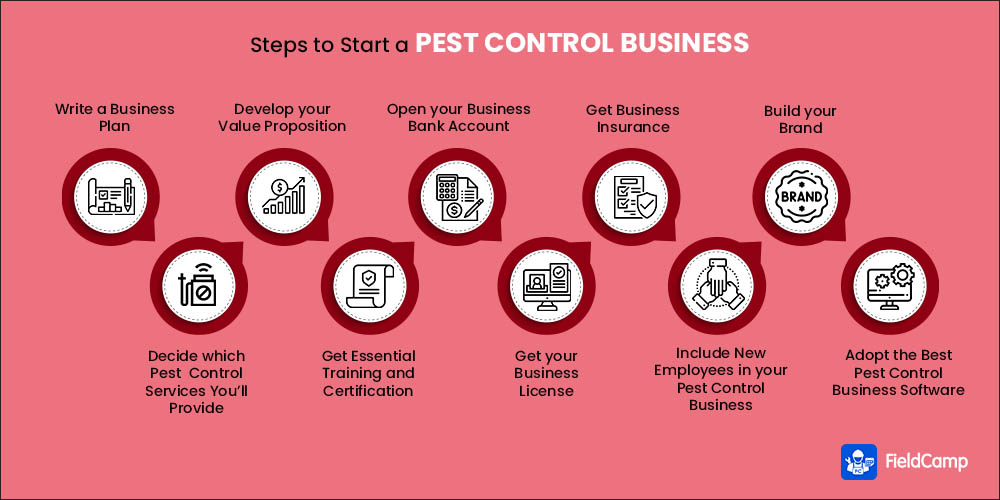Pestwise Fundamentals Explained
Pestwise Fundamentals Explained
Blog Article
The Main Principles Of Pestwise
Table of Contents5 Easy Facts About Pestwise ShownThe Main Principles Of Pestwise The Ultimate Guide To PestwiseThe Best Guide To PestwiseThe Ultimate Guide To PestwiseThe Ultimate Guide To PestwisePestwise Fundamentals Explained

Q. Specify "integrated parasite monitoring" (IPM) and listing a number of possible control tactics that might be used in an IPM approach. A. Integrated bug administration is the combining of ideal insect control strategies right into a solitary plan to reduce pests and their damage to an appropriate degree. Parasite control strategies might consist of: host resistance, organic control, cultural control, mechanical control, cleanliness, and chemical (chemical) control.
The Only Guide for Pestwise
What can you do to keep the bugs you are attempting to regulate from becoming immune to the pesticides you utilize? A. Parasite resistance can be reduced by using incorporated pest monitoring and rotating the kinds of chemicals used.
Bugs are a critical hazard to the farming service, and incorporated bug monitoring aids cultivators address and alleviate these threats. Integrated bug monitoring utilizes a number of techniques in complex, thus being an extra reliable option to the issue. Exterminator. Particularly, eliminating hostile chemical methods enables lessening harm to people and the environment by utilizing natural and more secure alternatives instead
The Buzz on Pestwise
The objective of integrated pest management is to reduce this harm and control appropriate infestation degrees instead of eliminate all undesirable populations. This is why it is essential to comprehend what procedures are justified in each instance and use hostile ones only when other incorporated management strategies don't function. Integrated monitoring minimizes the unfavorable effects of a non-IPM technique, and the main advantages of IPM Advantages of IPM.
A proper understanding of the invasion extent figures out if the issue must be dealt with. are the following components of an IPM program since it is essential to recognize if the microorganisms make potential dangers and choose the incorporated administration alternatives or the specific pesticide usage. mean to decrease invasions by using various agronomic techniques.
Some Ideas on Pestwise You Need To Know
if avoidance was ineffective. Integrated management options in an IPM program start with safer to much more hostile ones. For instance, target or program chemical splashing may comply with manual removal or capturing that hasn't aided. The prior incorporated monitoring elements aid recognize just how link to prepare and carry out an IPM program step by step: Screen your crops regularly.

To name a few, IPM cultural methods include the following field management methods: dirt therapy; option of ideal plants; plant rotation; interplanting or strip cropping; selection of growing days; weed control; use trap plants. Beneficial soil conditions accelerate plant growth, and vigorous plants are extra immune to problems. Termite Control. In incorporated bug administration, soil testing helps understand if the field is ideal for the manufacturing of this or that crop, and then use the lacking nutrients to ensure plant healthy and balanced development
The Main Principles Of Pestwise
No-till methods help avoid dirt erosion, adding to sustainable farming. When tilling is needed, it is suggested to perform it in the autumn to reveal them to natural opponents and extreme weather. Healthy and balanced seedlings and seeds determine effective crop advancement, so it is necessary to select pest-free growing material with strong origins.
, which is also utilized in the incorporated bug monitoring system. Alternatively, problems increase when plants of the exact same plant type or household grow together.
Similarly, potato beetles can hurt growing potatoes, in addition to tomatoes. Planting catch plants in spots is one more option for IPM intercropping. This integrated insect management method recommends drawing in bugs to particular plants and then managing them with chemical or mechanical techniques. Specifically, you can expand soybeans as trap plants for Japanese beetles.
Some Known Details About Pestwise
Obstacles are case in points of physical IPM approaches. Let's take a more detailed check out them. Getting rid of or choosing pests out by hand is a time and labor-consuming option that is commonly used in incorporated administration and natural farming. Mature pests or their eggs and larvae are collected by hand and ruined.

Department of Plant Sciences. College of Missouri. Soil solarization is an efficient incorporated monitoring method to sanitize the field by warming it in an all-natural way. This incorporated administration approach indicates a common way of damaging parasites by predators, parasitoids, microorganisms, and other biological control agents (also known as antagonistic microorganisms). The role of biological control in IPM is to.
A Biased View of Pestwise
With time, their population became a real nuisance to farmers along with aboriginal kangaroos or dingoes. The walking stick toad is another instance illustrating integrated biological control failing hereof when it rejected to quest the target types and came to be a bug itself. Parasitoids develop on or within their hosts to at some point eliminate them after maturing.
Report this page